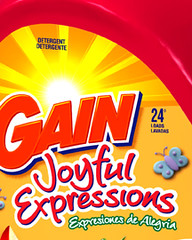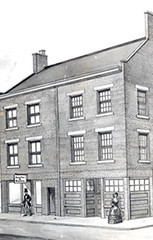 If social media buzz ruled the world, we'd all smell like Old Spice and drive minivans. And, without the benefit of the YouTube videos to back up the imagery of what we're supposed to relate to, it's a very frightening thought.
If social media buzz ruled the world, we'd all smell like Old Spice and drive minivans. And, without the benefit of the YouTube videos to back up the imagery of what we're supposed to relate to, it's a very frightening thought. Thank goodness some people are interested in seeing sales numbers before adopting the practice of flash-in-the-pan spots where companies poke fun at themselves. But do ads that draw more attention to themselves than the product really draw in customers?
The Toyota Minivan Rap.
The first time I really gave the minivan rap half a thought was after Driven Media mentioned its marketing blog. I'm always interested in new marketing blogs, but was surprised to find some praise for the Toyota Minivan Rap, which has been shared everywhere for approximately 4.5 million views.
Sure, it's almost funny, creative, and pokes fun at the embattled Toyota company. But why did it really receive attention? It was the first attempt at a campaign since the recall crisis. At least one media outlet asked if it was racist (I don't see how). And even the talent and agency attracted some attention. But what about the minivan?
The irony? There really isn't a minivan market anymore. Last year, minivan sales plunged to 415,000, partly due to the fact that most minivans get an estimated 19 miles per gallon.
Another irony? For all the sharing, I wonder how people would feel if they knew a consumer offered up one rap one year earlier? Still, as they say in Japan, all is forgotten in 70 days.
The Old Spice Man Spontaneity.
Even more viral than the minivan rap is the Old Spice guy. Much like a drunken party, everyone is piling on to say how brilliant the creative is without fear of a hangover. I won't question that. It's funny stuff, much funnier than the minivan video. I love reading about how they made it.
There is no question the video series is a temporary social media success story. Here are some stats, driven by the unpredictability of it all.
On the flip side, some people are questioning the product smell. That question really helps pinpoint what needs to be asked.
While the campaign might convince people to give Old Spice a try (maybe), what happens after that? It all depends on the product. But more importantly, even if changes to the product will help push it along, can the Old Spice success be attributed to social media?
NO. If people read business magazines more than they watch YouTube videos, they would already know Old Spice had inched by Right Guard to become the nation's leading deodorant and antiperspirant for men. So, this might not be a social media success story at all.
This is a long-term rebranding effort that started a long time ago, with the opening image above a part of it all. So, the social media series is just another step. And knowing this might prompt other questions all together. Does the social media series run counter to the investment that gave Old Spice a base to connect with on YouTube? It's hard to say, but there is one last irony.
One of the Old Spice products also includes a "Swagger" strip as part of the product positioning. So maybe the initial idea that minivan owners are Old Spice customers isn't far off after all. The only thing weird about that is that Tony Stewart doesn't drive one of those around the track.























